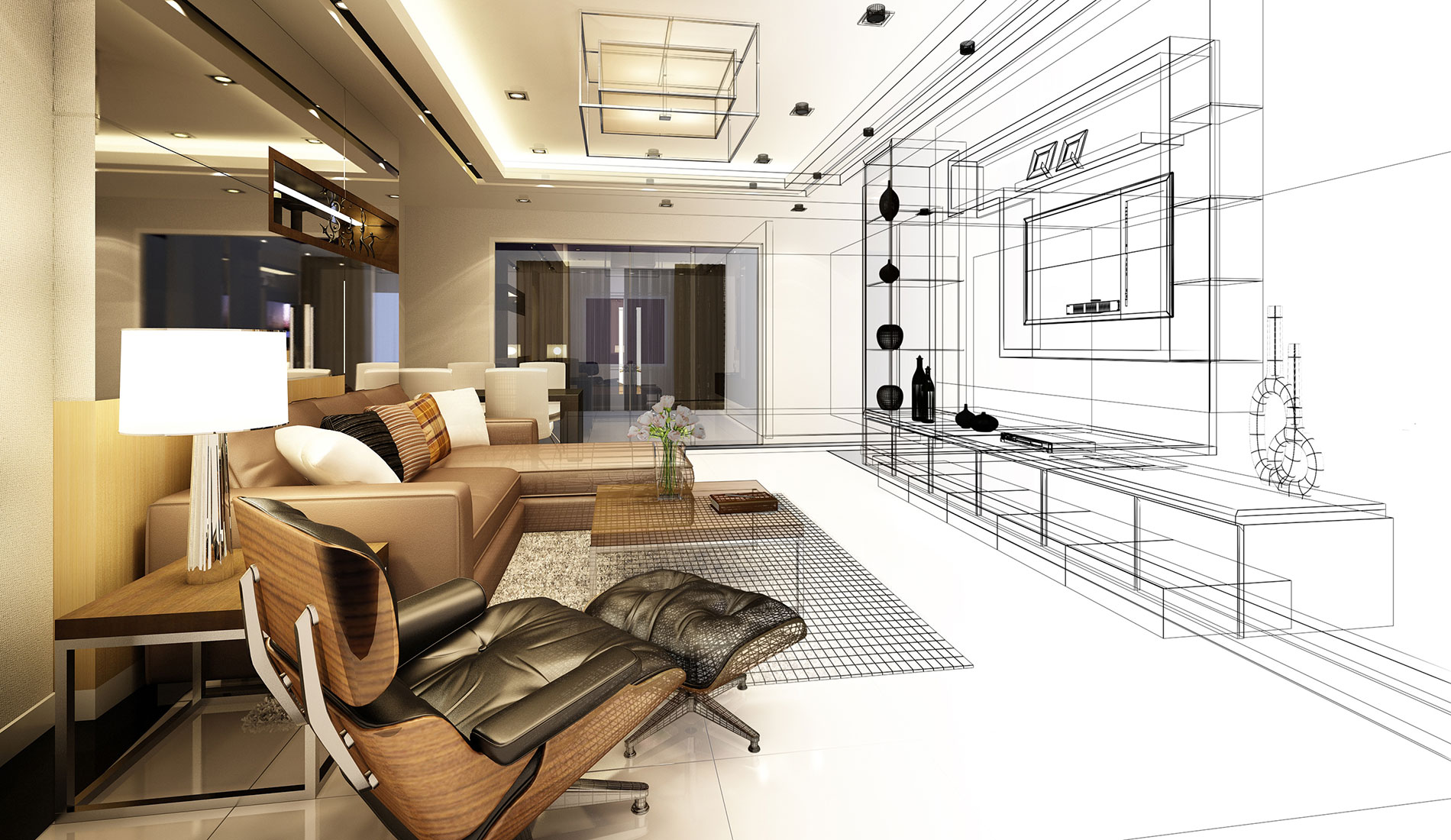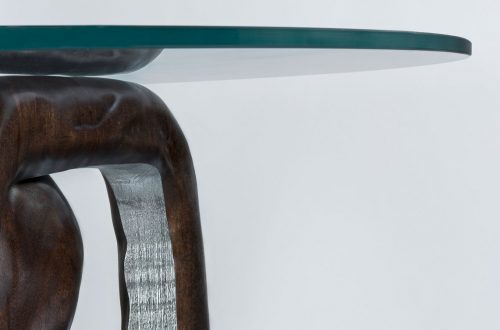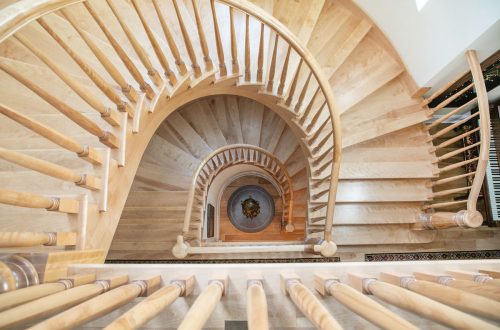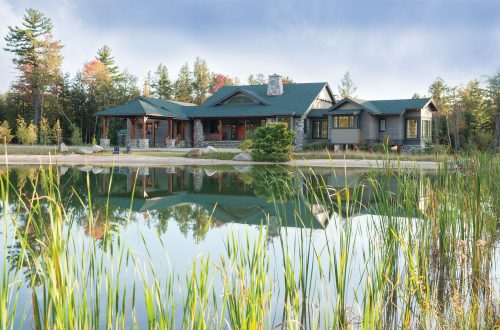A historic preservation initiative is opening the pages on Michigan’s storied role with modernism.
Michigan, while recognized for its prowess in shaping the automobile and furniture-making industries, is not often credited for its integral role in influencing modern design and modernism in America. The Michigan State Historic Preservation Office became acutely aware of this fact while undertaking a major initiative more than eight years ago to research, document, and promote the preservation of buildings that had originally been constructed between the 1940s and 1970s.
“We saw a trend of buildings coming of age from the historic point of view, where those buildings were either up for major rehabilitation, some major infusion, total remodel, or in some cases, demolished for new construction,” said Brian D. Conway, state historic preservation officer.
“We realized there was no appreciation for buildings from that time period in Michigan. We felt in order to promote the preservation of buildings, we needed to first look at why they are important, what is their story, and what they mean to people,” added Conway.
The Michigan SHPO received a $118,000 Preserve America grant through the National Park Service in 2008 to begin documenting and promoting the architectural and design heritage during the 1940-to-1970 time period. The grant enabled the office to start developing a “context,” or story, and the team quickly discovered not only did Michigan’s architectural and design industry thrive during that thirty-year period, but also the state’s contributions to Modernism began much earlier than originally anticipated.
“We were able to document that there is quite an incredible story here in Michigan that just doesn’t exist anywhere else in the country,” said Conway.
Working with consultants of Lord, Aeck & Sargent Architects of Ann Arbor, the Michigan SHPO was able to formulate a historical context and identify the state’s storied role with modernism. From the industrial boom of automobile manufacturing on the southeast side of the state and furniture industry on the west side of the state, to the educational institutions such as Cranbrook Academy of Art and the University of Michigan School of Architecture, and well-known architects drawn to the state as early as the early 1900s when Albert Kahn pioneered reinforced concrete for industrial buildings; there was a rich convergence and synergy among industry, education, architecture, and talent in Michigan creating an epicenter of modern design.
“The crux of the story is there were all those things happening around the same time that just were not happening anywhere else—plus the wealth all of those things brought into Michigan,” said Conway. “There was an era when young designers were attracted to Michigan, or Michigan was the place to be, because of the designs—and the industry that was producing the designs.”
Conway added with the state’s foundation and base of production and industry, designers who were drawn to the state to design architecture or products, were creating those for mass production.
“It was the first time modernism really was pushed out to the rest of the country,” said Conway.
Some of the well-known, influential figures and organizations tied to Michigan comprise: Albert Kahn and Julius Kahn, and their formation the Trussed Concrete Steel Company; Emil Lorch’s and the University of Michigan; Eliel Saarinen and the Cranbrook Academy of Art; the design and styling of automobiles at Ford Motor Company and General Motors; and the Herman Miller Furniture Company. Other architects who left a lasting fingerprint on the world of design and architecture comprise: Eero Saarinen, Minoru Yamasaki, and Alden Dow.
Amy Arnold, preservation planner at Michigan SHPO and project manager for the Michigan Modern project, said one of the most interesting aspects learned during the researching for the project was how influential Emil Lorch was in terms of formalizing architecture into an educational curriculum.
“A lot of architects that came out of the University of Michigan program were modernist because of that,” said Arnold. “Emil Lorch was teaching more of an organic architecture and that is where Michigan really came into its own.”
The Michigan SHPO’s Michigan Modern project, which began as a means of preserving the very buildings representing the state’s influence in modern design, evolved throughout the process to an initiative not only educating and promoting the state’s rich design history, but also striving to change the perception of Michigan and what is has to offer as a design center.
The project team not only developed a website incorporating information about Michigan’s design heritage, but also held major museum exhibitions at the Cranbrook Academy of Art in 2013 and the Grand Rapids Art Museum in 2014, and held a series of symposiums. Conway noted the team was also invited out to southern California to discuss Michigan’s role and the development of modernism.
“We participated in a conference called Modernism Week, which is held every year for the last 11 years or so in Palm Springs, California. They devoted an entire day to Michigan,” said Conway. “We were also just invited to speak again at Modernism Week in February and we were asked to speak at South by Southwest conference in March in Austin, Texas.”
The Michigan SHPO also recently released the “Michigan Modern: Design That Shaped America” book, which was co-authored and co-edited by Conway and Arnold. The book features a collection of essays on architecture and design, and was prompted based on the level of interest in Michigan’s story and a sense of responsibility.
“We felt a real obligation to have this story out in the world,” said Conway. “Michigan is still a center of design and that was another thing we wanted to promote through the book. “
“And to counteract the rust belt attitude about Michigan as just a manufacturing center when our design is actually as strong or stronger than manufacturing,” added Arnold. “We want to be part of attracting new talent to Michigan.”
Visit michiganmodern.org
GLBD




